SNOWPLOWS CAN CAUSE VEHICLE FIRES
By
Charles C. Roberts, jr.
Snowplows and other snow removal related
equipment are often installed as after-market
additions to vehicles such as light trucks and some
sports utility vehicles. Figure 1 is a typical
conceptual drawing of how most of the snowplow
kits are put together. The snowplow is mounted at
the front frame area and houses a hydraulic motor
and system to raise, lower and adjust the plow
angle. Power wiring for the hydraulic motor and
other accessories, like a salt spreader, are controlled
via a relay system that is connected to the hand
control in the vehicle cab. The hand control is
connected to the hydraulic motor control and salt
spreader control systems, using typical light gauge
service wiring.
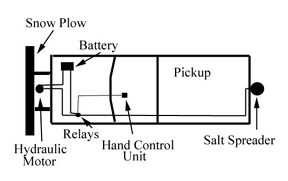
Figure 1
Installers of this equipment range from the
professional to the "first timers." Professional
installations usually work out well, while those
installed by "part-timers" can be deficient. One of
the most common problems with after-market
snowplow installations is routing of electrical
cables. After the apparatus has been mounted to the
vehicle frame, little attention is paid to proper
location and attachment of snowplow system related
electrical wiring. Typical installation errors include:
improper securing of the wiring, resulting in
chaffing; wires contacting hot or rotating surfaces;
and wires wound across sharp metal structures that
penetrate the insulation and cause short circuits.
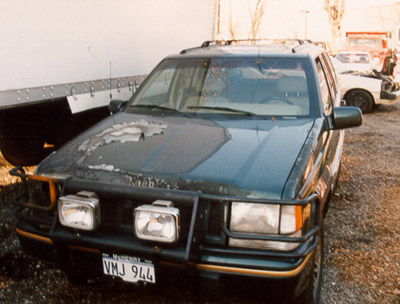
Figure 2
Figure 2 is a view of a vehicle that sustained a fire
in the engine compartment near battery wiring.
Figure 3 is a view of the salt spreader wire that had
been routed through the frame area to the back of
the vehicle. The wire was loose in the vicinity of the
exhaust pipe and was periodically in contact with
the exhaust pipe. This resulted in an electrical short
circuit that overloaded the battery and caused an
engine compartment fire.

Figure 3
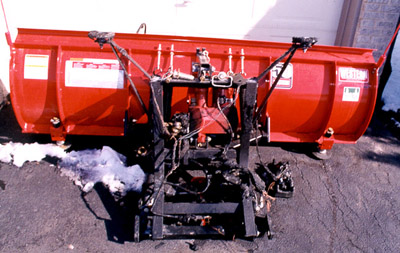
Figure 4
Figure 4 is a typical after-market snowplow
assembly that is mounted to the vehicle frame. A
common mistake by installers is to pass electrical
wires through holes in the vehicle frame without
adding chafing protection such as using a rubber
grommet. Figure 5 shows such an installation
through a hole in the front body work of the vehicle.
The arrow points to electrical arc eroded metal
where a cut in the wire

Figure 5
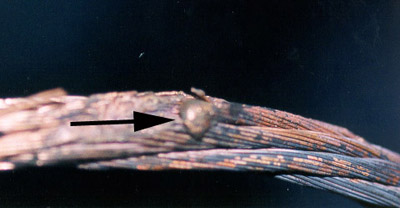
Figure 6
insulation most likely occurred. Figure 6 shows an
arc bead of copper in the area of the wire that
shorted. The arc bead forms at high temperatures
generated during the electrical fault, which in this
case caused an engine compartment fire in the
vehicle. Figure 7 is a view of a loose electrical
power cable that was not properly secured to a cable
clamp. It shorted as a result of chaffing and was
welded to the wheel well as shown in the close-up
of Figure 8. The heat from the short circuit caused a
fire in the engine compartment and total loss of the
vehicle.
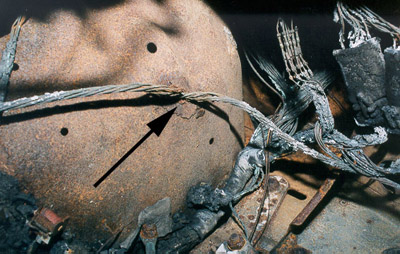
Figure7
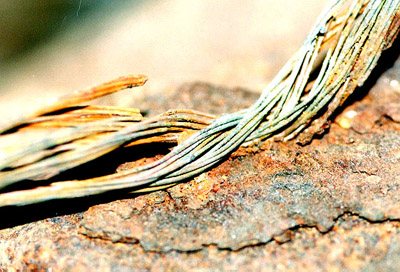
Figure 8
When investigating the cause of a fire in a
snowplow equipped vehicle, an inspection of the
snowplow installation may yield evidence as to
cause. Since these devices may be installed by
unknowledgeable installers, they are prone to
failures resulting from poor workmanship.








